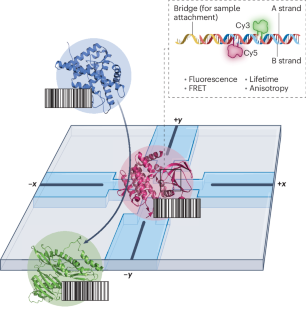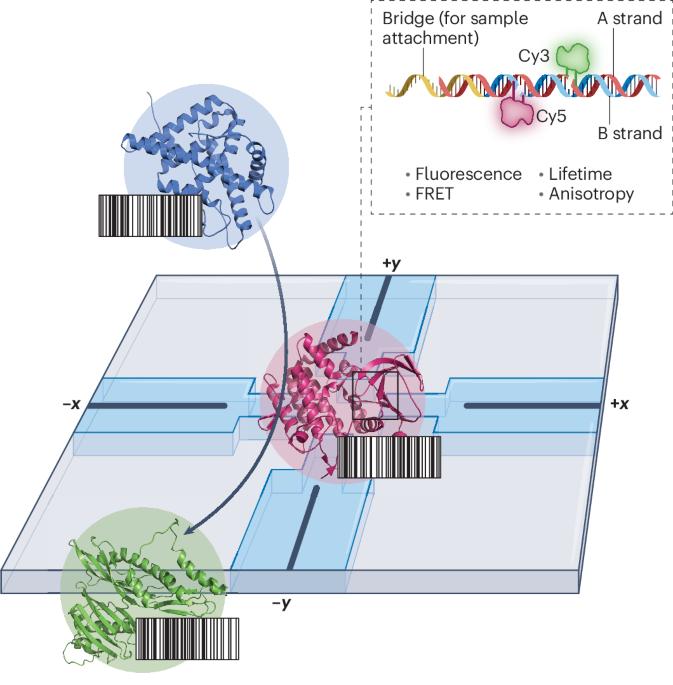复杂混合物中基于荧光的条形码技术的新发展
IF 38.1
1区 材料科学
Q1 MATERIALS SCIENCE, MULTIDISCIPLINARY
引用次数: 0
摘要
将单分子佛斯特共振能量转移(FRET)和反布朗电动(ABEL)阱内的荧光寿命信息结合起来,可以区分样品混合物中的几十种生物分子。这种方法只需极少的化学成分就能对生物分子进行广泛的条形编码,并为复杂混合物中的生物分子定量开辟了道路。本文章由计算机程序翻译,如有差异,请以英文原文为准。


New dimensions for fluorescence-based barcoding in complex mixtures
Combining single-molecule Förster resonance energy transfer (FRET) and fluorescence lifetime information inside an anti-Brownian electrokinetic (ABEL) trap makes it possible to distinguish dozens of biomolecules in a sample mixture. This method enables extensive barcoding of biomolecules with a minimal set of chemical components and opens up a path toward biomolecule quantification in complex mixtures.
求助全文
通过发布文献求助,成功后即可免费获取论文全文。
去求助
来源期刊

Nature nanotechnology
工程技术-材料科学:综合
CiteScore
59.70
自引率
0.80%
发文量
196
审稿时长
4-8 weeks
期刊介绍:
Nature Nanotechnology is a prestigious journal that publishes high-quality papers in various areas of nanoscience and nanotechnology. The journal focuses on the design, characterization, and production of structures, devices, and systems that manipulate and control materials at atomic, molecular, and macromolecular scales. It encompasses both bottom-up and top-down approaches, as well as their combinations.
Furthermore, Nature Nanotechnology fosters the exchange of ideas among researchers from diverse disciplines such as chemistry, physics, material science, biomedical research, engineering, and more. It promotes collaboration at the forefront of this multidisciplinary field. The journal covers a wide range of topics, from fundamental research in physics, chemistry, and biology, including computational work and simulations, to the development of innovative devices and technologies for various industrial sectors such as information technology, medicine, manufacturing, high-performance materials, energy, and environmental technologies. It includes coverage of organic, inorganic, and hybrid materials.
 求助内容:
求助内容: 应助结果提醒方式:
应助结果提醒方式:


